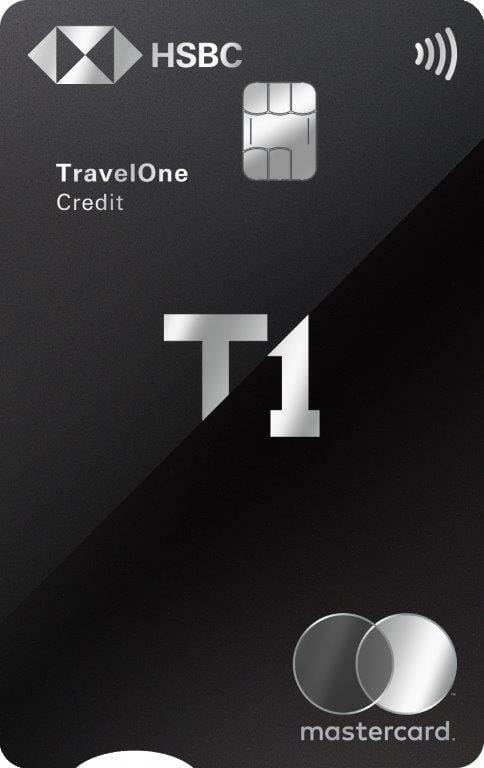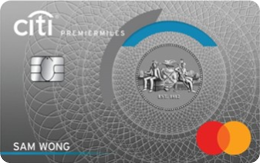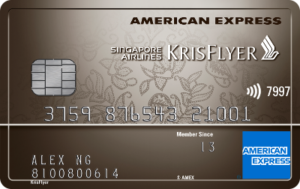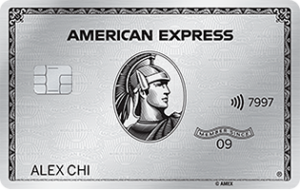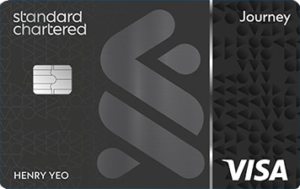While Singapore Airlines KrisFlyer and Cathay Pacific Asia Miles are probably the two best-known frequent flyer programmes in Singapore, there’s a much bigger universe out there.
Cardholders can now transfer their points to 19 airline and five hotel loyalty programmes, a far cry from the scene when I first started collecting miles more than 10 years ago!
But not all partners represent good use of your hard-earned points, and with so many to choose from, it’s easy to get overwhelmed. In this guide, we’ll go through the important things to know about transfer partners, and how to get maximum value from your points.
Where can you transfer your credit card points?
Here’s a table summarising the various airline and hotel loyalty programmes available to cardholders in Singapore.
Leading the pack is HSBC, with an impressive 17 airline and four hotel partners to choose from. These were previously only available to TravelOne Cardholders, but have now been rolled out to all HSBC cards.
This replaces the previous leader Citibank, which has 10 airlines and one hotel partner. American Express is in third with eight airlines and two hotel partners, then OCBC with six airlines and three hotel partners.
Outside the “big 4”, the rest of the banks are largely the same. All offer KrisFlyer and Asia Miles at a minimum, with airasia, Qantas and Malaysia Airlines making the occasional appearance.
There’s a few important things I want to highlight.
Not all transfer ratios are the same
For the majority of banks in Singapore, all airlines share the same transfer ratios. Not only does this make things simpler, it also means you can take the headline earn rate at face value.
For example, when the Citi PremierMiles Card advertises 1.2 mpd on local spend, we know that it holds regardless of which of the 10 airline partners you choose, since they all share the same conversion ratio.
But when the HSBC TravelOne Card advertises 1.2 mpd on local spend, we need to take a step back and ask “for which programme?” Depending on which frequent flyer programme you transfer points to, the actual earn rate would be anywhere from 0.6-1.2 mpd!
| Transfer Ratio (Points : Miles) |
HSBC T1 (SGD)* |
HSBC T1 (FCY)^ |
| 25,000 : 10,000 | 1.2 mpd | 2.4 mpd |
| 30,000 : 10,000 | 1 mpd | 2 mpd |
| 35,000 : 10,000 | 0.86 mpd | 1.71 mpd |
| 40,000 : 10,000 | 0.75 mpd | 1.5 mpd |
| 50,000 : 10,000 | 0.6 mpd | 1.2 mpd |
| *3 points per S$1 on SGD spend ^6 points per S$1 on FCY spend #10 points per S$1 on bonus categories |
||
Here’s a summary of the arrangement for each bank.
| Same transfer ratios for all airline partners* | Different transfer ratios for different airline partners* |
|
|
| *I’m ignoring airasia rewards, which is more of a rebates scheme than a traditional frequent flyer programme | |
There are two banks where the ratios are not uniform across programmes: HSBC and OCBC.
HSBC
| ✈️ HSBC Airline Partners | |
| Frequent Flyer Programme | Conversion Ratio (HSBC : Partner) |
| 50,000 : 10,000 | |
| 40,000 : 10,000 | |
| 35,000 : 10,000 | |
| 35,000 : 10,000 | |
| 35,000 : 10,000 | |
| 35,000 : 10,000 | |
| 35,000 : 10,000 | |
 |
30,000 : 10,000 |
| 25,000 : 10,000 | |
| 25,000 : 10,000 | |
| 25,000 : 10,000 | |
| 25,000 : 10,000 |
|
| 25,000 : 10,000 | |
| 25,000 : 10,000 | |
| 25,000 : 10,000 | |
| 25,000 : 10,000 | |
 |
25,000 : 10,000 |
| 🏨 HSBC Hotel Partners | |
| Hotel Programme | Conversion Ratio (HSBC Points : Partner) |
 |
30,000 : 10,000 |
| 25,000 : 5,000 | |
| 25,000 : 10,000 | |
| 25,000 : 10,000 | |
OCBC
| ✈️ OCBC Airline Partners | |
| Frequent Flyer Programme | Conversion Ratio (OCBC$ : Miles) |
| 25,000 : 10,000 |
|
| 10,000 : 4,000 | |
| 10,000 : 3,600 | |
| 10,000 : 3,600 | |
| 10,000 : 2,900 | |
| 10,000 : 2,800 | |
| 🏨 OCBC Hotel Partners | |
| Hotel Programme | Conversion Ratio (HSBC Points : Partner) |
| 10,000 : 2,000 | |
| 10,000 : 4,000 | |
| 10,000 : 4,000 | |
Minimum transfer amounts may be different
Even if a bank has the same transfer ratio for all partners, the minimum transfer amount may vary depending on partner.
| Same minimum transfer for all airline partners* | Different minimum transfer for different airline partners* |
|
|
| *Ignoring Airasia rewards | |
There are three banks where the minimum transfer amounts differ across programmes: Bank of China, Maybank, and OCBC.
At Bank of China, the minimum transfer amounts are:
- 10,000 KrisFlyer miles
- 6,000 Asia Miles
At Maybank, the minimum transfer amounts are:
- 10,000 KrisFlyer miles
- 5,000 Asia Miles/Enrich Points
At OCBC, the minimum transfer amounts are:
- 10,000 KrisFlyer miles
- 4,000 FlyingBlue miles
- 3,600 British Airways Avios or Etihad Guest miles
- 2,900 Asia Miles
- 2,800 United MileagePlus miles
For all other banks, the minimum conversion amounts are the same regardless of partner.
British Airways and Qatar Airways are effectively the same
 |
 |
Both British Airways and Qatar Airways use Avios as their frequent flyer currency. Members can make free, instant 1:1 conversions between programmes.
Therefore, if a bank offers British Airways Executive Club, it effectively offers Qatar Airways Privilege Club (and vice versa). Take note of this if you have a HSBC card, as it’d be silly to transfer points to Qatar Privilege Club at a 3.5:1 ratio when you could do it via British Airways Executive Club at a 2.5:1 ratio!
Not all miles are made the same!
At the risk of stating the obvious, 1 KrisFlyer mile is not worth the same as 1 Asia Miles is not worth the same as 1 Qatar Avios etc etc. Think of them as different currencies, each with their own rules, redemption partners, and award pricing.
These differences give rise to what we call “sweet spots”, routes where the price with one particular frequent flyer programme is much lower than others.
For example, suppose I want to fly from Singapore to Bangkok in Business Class on Singapore Airlines. I could redeem this flight through:
| Programme | Miles Required (one-way Business) |
| Air Canada Aeroplan | 20,000 miles |
| THAI | 20,000 miles |
| KrisFlyer | 24,000 miles |
| EVA Air | 27,500 miles |
| United MileagePlus | 45,000 miles |
| Turkish Miles&Smiles | 50,000 miles |
Notice how the cost ranges from 20,000 to 50,000 miles, though you get exactly the same flight. To the extent that your credit card points can be converted at the same ratio to all programmes, you would of course want to pick the one with the lowest redemption costs!
| ⚠️ Important Note |
|
One assumption we’re making here is that the airline in question does not add fuel surcharges to its tickets. If it does, then you need to ask whether the frequent flyer programme absorbs them or passes them on. For example, if FFP A absorbs fuel surcharges but FFP B does not, then FFP A may be the better choice even if charges more miles than FFP B. The exact trade-off depends on your relative valuation of miles for FFP A/B. Air Canada Aeroplan, Alaska Mileage Plan, Avianca LifeMiles and United MileagePlus do not pass on fuel surcharges. Unfortunately, these programmes are either not available via credit cards in Singapore, or have very poor transfer ratios. |
It’s beyond the scope of this article to highlight all the sweet spots out there, suffice to say that understanding and finding these are key to stretching your miles.
Which alliance is the airline part of?
The benefit of transferring miles to a frequent flyer programme that’s part of an alliance is the ability to redeem them for flights on any member airline. For example, Asia Miles can be used not just for Cathay Pacific flights, but for flights on oneworld partners like American Airlines and Qatar Airways.
| ❓ Where do I redeem my miles? |
| The correct website to visit depends on which miles currency you’re using to redeem. For example, if I have KrisFlyer miles and want to redeem a flight on ANA, I visit the KrisFlyer website, not the ANA website. |
Here’s a rundown of the three major airline alliances and their members.
 |
|
| Star Alliance | |
|
|
 |
|
| oneworld | |
|
|
 |
|
| SkyTeam | |
|
|
But there’s more than just the three main alliances. Frequent flyer programmes can also have non-alliance partners, where agreements are worked out bilaterally. For example, KrisFlyer members can also redeem miles for Alaska Airlines, Malaysia Airlines, Virgin Atlantic, Virgin Australia and Vistara flights, despite the fact that none of them are part of Star Alliance.
| FFP | Non-Alliance Partners |
|
 |
|
|
 |
|
|
 |
|
|
|
|
|
 |
|
|
 |
|
|
|
|
|
|
|
|
Do note that partner awards may only be available on selected routes. For example, Asia Miles allows redemptions on SWISS, but only for flights between Zurich and Berlin, Brussels, Florence, Geneva, Hamburg, Hong Kong, Stuttgart, and Venice.
Moreover, you may not be able to book all partner awards online, so if you don’t see what you want on the website, try calling up customer service.
Check the respective websites for the full details and restrictions.
A word about fuel surcharges
Fuel surcharges, for the uninitiated, are basically junk fees that airlines tack onto award tickets, in an attempt to squeeze some additional cash out of members. It’s an absurd concept if you think about it, kind of like going to a restaurant and having to pay an “ingredient surcharge”.
The good news is that Singapore Airlines no longer imposes fuel surcharges, ever since March 2017. The bad news is that KrisFlyer will continue to pass them on wherever applicable, and these can be substantial on carriers like Lufthansa.

Unfortunately, that’s the case for all the frequent flyer programmes available to cardholders in Singapore, with just two exceptions:
- United MileagePlus (for all awards)
- Qatar Privilege Club (For Qatar Airways flights only)
| ⚠️ Award segment fee |
|
Qatar Privilege Club may not impose fuel surcharges, but it does have an “award segment fee” that costs US$35/70/100 per Economy/Business/First Class flight segment. For example, if you fly round-trip Business Class from SIN-DOH-FRA, you will pay US$280 in total (US$70 x 4 segments). That’s almost as bad as a fuel surcharge! |
All you can do in that case is focus on redemptions on airlines with modest or no fuel surcharges, such as Finnair, Qantas (excluding departures from Europe) or United, or originate from countries that ban or regulate fuel surcharges such as:
- Australia
- Brazil
- Hong Kong
- New Zealand
- Philippines
- South Korea
- Taiwan
- Thailand
- Turkey
- Vietnam
Flights originating from these countries should have considerably lower fuel surcharges.
What about hotels?

You may have noticed that I’ve not addressed hotel loyalty programmes at all in this post. There’s a reason for that: it almost never makes sense to convert credit card points to hotel programmes.
For example, suppose you’re a Citi cardholder with 25,000 ThankYou points. You could convert that to 10,000 KrisFlyer miles, or 10,000 IHG points. I personally value a KrisFlyer mile at 1.5 cents, and an IHG point at 0.67 cents (since you can easily buy them at 0.5 cents when they go on sale). Therefore, by taking the IHG points, you’re taking a haircut of more than 50%!
Fundamentally, the problem can be summarised in two points:
- On a one to one basis, most hotel points are worth less than miles
- Most banks in Singapore offer the same conversion ratios to hotel points as airline miles
There have been some cases when I converted credit card points to hotel programmes, but they were almost always exceptional. For example, I cashed out my entire StanChart X Card welcome bonus on Accor Live Limitless points, because of an excellent 100% transfer bonus offered at the start of COVID (giving me the equivalent of 3 cents per mile). Likewise, back in 2018 American Express offered a transfer bonus of 3 Hilton points per MR point, which was almost certainly an error. AMEX still honored it, however.
If you really want hotel points, you’re better off buying them when they go on sale.
| Chain | Typical Price During Sale |
| Hilton | 0.5 US cents (100% bonus) |
| IHG One Rewards | 0.5 US cents (100% bonus) |
| Marriott Bonvoy | 0.89 US cents (40% bonus) |
| World of Hyatt | 1.8 US cents (25% discount) |
Conclusion
KrisFlyer and Asia Miles are useful programmes, but you shouldn’t limit your horizons to just these two. Over the past few years we’ve seen banks adding more and more “exotic” partners to their rosters, which can open up great redemption opportunities.
Before you decide on yet another KrisFlyer or Asia Miles transfer, think about where you want to go, which programme offers best value for that particular route, transfer bonus opportunities, as well as alliance and non-alliance partners. It’s not always a straightforward exercise, but can be the difference between taking one free trip or several!
Which programmes do you usually transfer your credit card points to?

